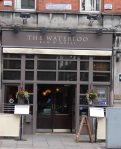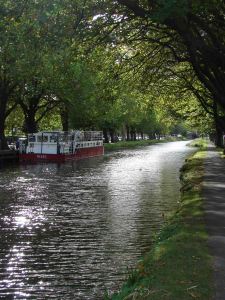St Michan’s Church, on Church Street, is the oldest parish church on the north side of the Liffey, and the building dates from 1686. The church was originally founded in 1095 and operated as a Catholic church until the Reformation. Since then it has served Church of Ireland parishioners for over three hundred years.
The church is most famous for its crypts where the limestone walls have kept the air dry and helped preserve the remains. When our guide removed a heavy chain and pulled back the strong, iron door it creaked loudly and made a few of my fellow visitors a little less comfortable. I suspect if we visiting on a dark winter’s day the atmosphere would have been really heightened. Along the corridor there are a number of recesses where coffins rest, some on top of one another, and at the end we met The Crusader. The state of preservation is amazing, and once upon a time visitors used touch his long, bony hand – for luck! In another recess are the remains of the Sheares Brothers, John & Henry, who were executed for their part in the 1798 Rebellion. You can also see their Execution Order, and in the back is the death mask of Theobald Wolfe Tone. It is no surprise that Bram Stoker (the creator of Dracula) is believed to have visited these subterranean vaults. It is also reckoned that the body of Robert Emmet (leader of the failed 1803 Rising) was buried in an unmarked grave in the graveyard, but it has never been identified.
Inside, the church still retains its beautiful gallery and the stained glass window looked great with sun behind it. But most impressive of all is the organ which was built by John Baptiste Cuville between 1723-1725, and cost around £550 – a lot on money back then. Legend has it that George Frideric Handel composed and practised his famous oratorio Messiah on it, before its first performance at the New Music Hall in Fishamble Street on 13th April 1742. Thinking about the composer sitting there, in the candle light, as he worked away on his great work, was quite a good way to end my visit to one of Dublin’s most interesting places.













